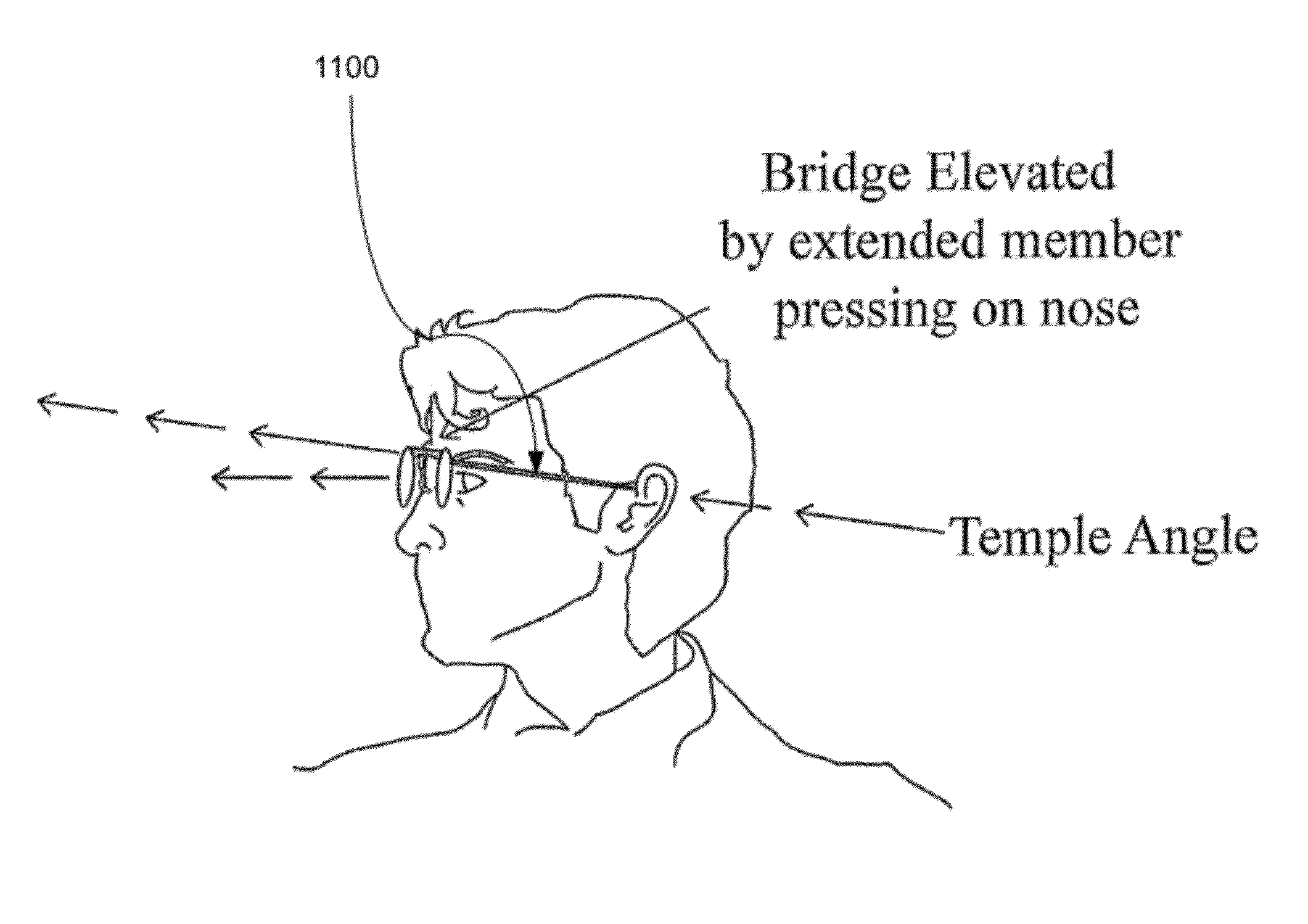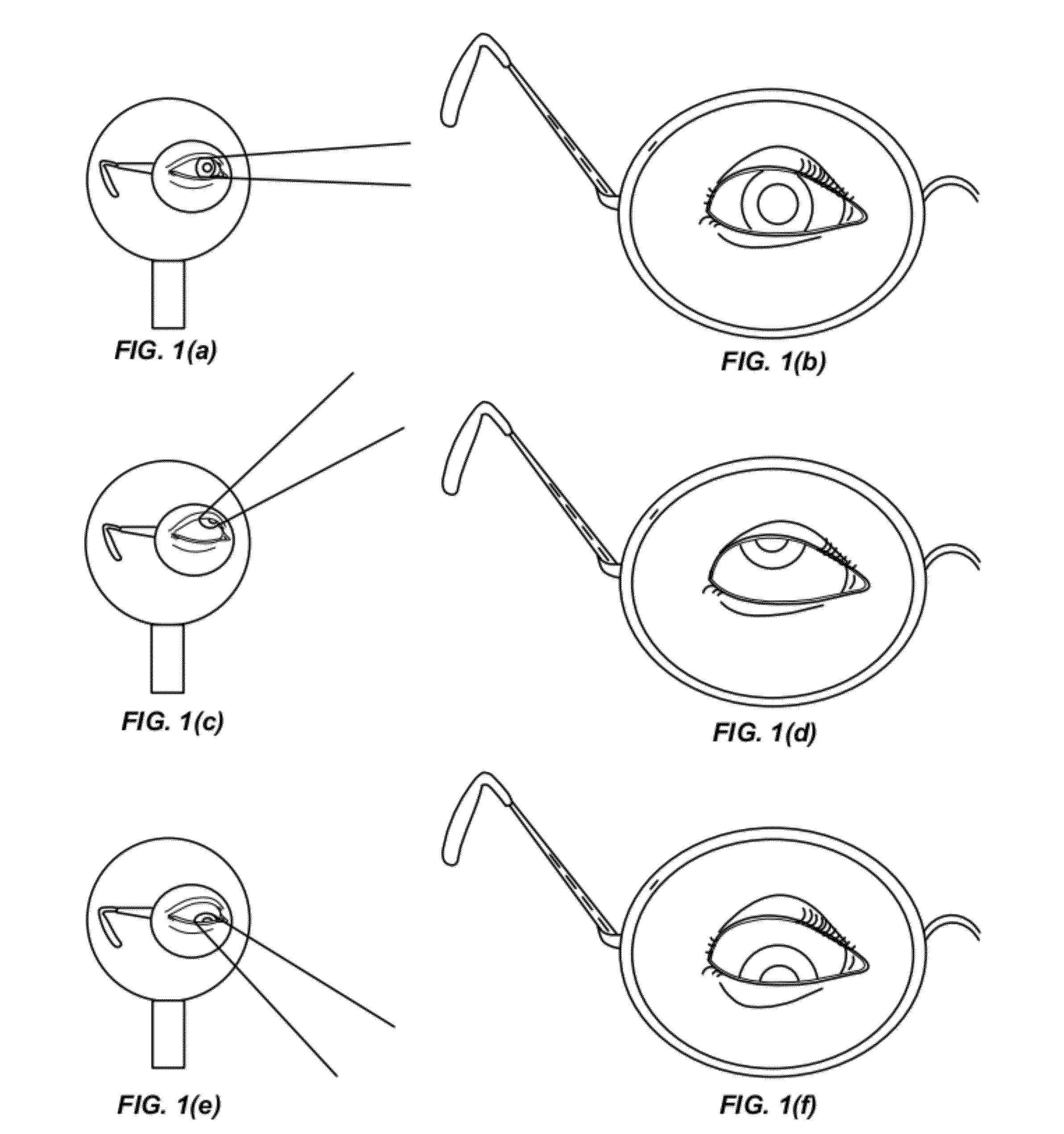Translating multifocal eyeglass lenses
a technology of multifocal and eyeglass lenses, applied in the field of translating multifocal eyeglass lenses, can solve the problems of blurred tv picture, wearer's eyeglass lens may interfere with the screen of the tv, and not an optimal solution
- Summary
- Abstract
- Description
- Claims
- Application Information
AI Technical Summary
Benefits of technology
Problems solved by technology
Method used
Image
Examples
Embodiment Construction
[0071]Some terms that are used herein are described in further detail as follows:
[0072]As used herein, “add power” may refer to the optical power added to the far distance viewing optical power which is required for clear near distance viewing in a lens. For example, if an individual has a far distance viewing prescription of −3.00D with a +2.00D add power for near distance viewing then the actual optical power for near distance is −1.00D. Add power may sometimes be referred to as plus power. Add power may be further distinguished by referring to “near viewing distance add power,” which refers to the add power in the near viewing distance portion of the optic and “intermediate viewing distance add power” may refer to the add power in the intermediate viewing distance portion of the optic. Typically, the intermediate viewing distance add power may be approximately 50% of the near viewing distance add power. Thus, in the example above, the individual would have +1.00D add power for in...
PUM
 Login to View More
Login to View More Abstract
Description
Claims
Application Information
 Login to View More
Login to View More - R&D
- Intellectual Property
- Life Sciences
- Materials
- Tech Scout
- Unparalleled Data Quality
- Higher Quality Content
- 60% Fewer Hallucinations
Browse by: Latest US Patents, China's latest patents, Technical Efficacy Thesaurus, Application Domain, Technology Topic, Popular Technical Reports.
© 2025 PatSnap. All rights reserved.Legal|Privacy policy|Modern Slavery Act Transparency Statement|Sitemap|About US| Contact US: help@patsnap.com



